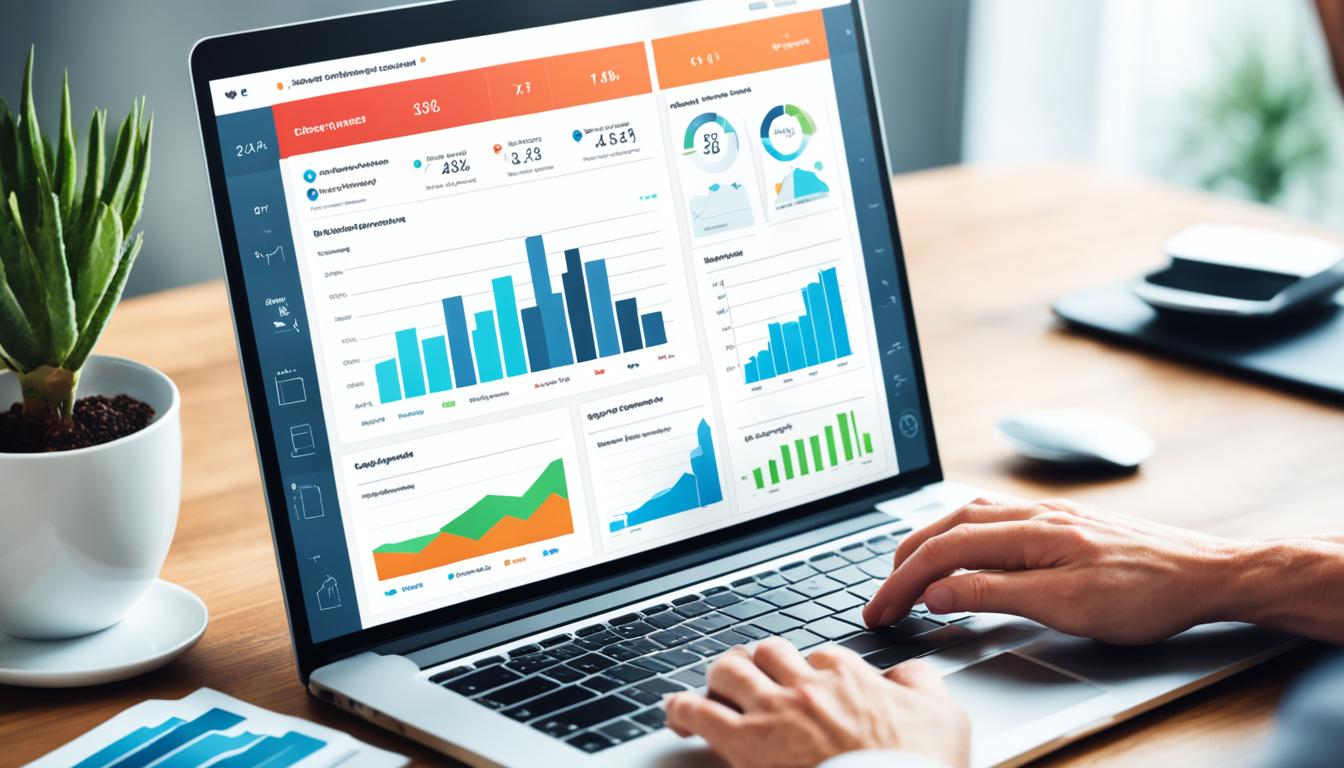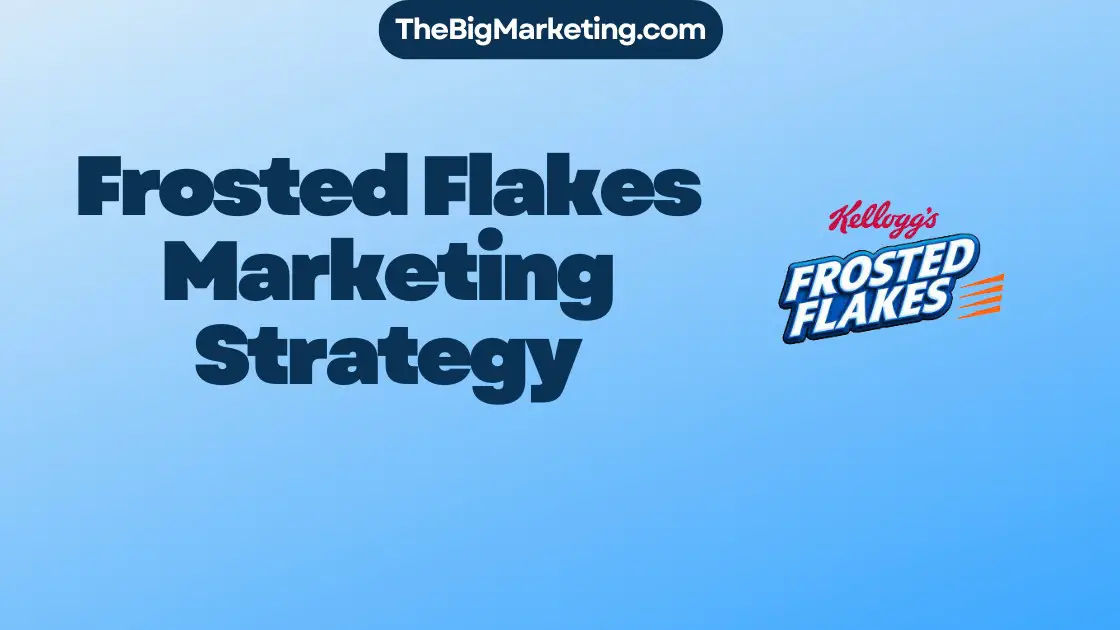Keurig, a leading name in the coffee industry, is set to revolutionize its marketing strategy in 2024. With a strong focus on capturing the at-home coffee market, Keurig is launching a new single-cup brewing model coffee maker. This strategic move comes in response to the growing trend of gourmet coffeehouses and the increasing interest in coffee consumption.
By offering consumers a convenient and high-quality coffee brewing system, Keurig aims to tap into this expanding market. With its diverse range of flavor options and partnerships with renowned coffee brands like Dunkin’ Donuts and Starbucks, Keurig positions itself as a premium product that caters to coffee enthusiasts seeking a superior coffee experience.
Through targeted advertising campaigns across various channels, including television, print media, and digital platforms, Keurig aims to create brand awareness and communicate the benefits of their coffee brewing system. Additionally, Keurig leverages the power of social media and digital marketing to engage with customers and showcase their products.
As part of their market analysis, Keurig has identified the growing interest in gourmet coffee and the convenience of single-cup brewing systems. This valuable insight allows them to tailor their product offerings and marketing strategies to meet the needs and preferences of their target audience.
In the competitive coffee market, Keurig faces challenges, such as the need for constant innovation to gain market share and potential environmental concerns associated with their single-use K-Cups. Moreover, their reliance on partnerships with branded coffee suppliers poses a risk if these partnerships dissolve.
Keurig’s pricing strategy takes into account market research and price elasticity. They offer different prices for 1-cup and 2-cup drinkers, catering to the price sensitivity of their target audience. To cater to environmentally conscious consumers, Keurig also provides a reusable container option.
Through various promotional activities, such as product demonstrations and innovative flavor introductions, Keurig aims to increase brand awareness and drive sales. They have also implemented a customer loyalty program, offering attractive benefits and incentives to foster customer loyalty and retention.
Looking ahead, Keurig’s future success relies on their ability to innovate, adapt to market trends, and maintain strong partnerships with coffee suppliers. By aligning their marketing strategy with current market demands, Keurig aims to solidify its position as a leader in the at-home coffee market.
Key Takeaways
- Keurig is implementing a new marketing strategy in 2024, focusing on capturing the at-home coffee market.
- Their product positioning as a premium brand with a variety of flavor options sets them apart from competitors.
- Keurig utilizes advertising campaigns across multiple channels to create brand awareness and promote their coffee brewing system.
- The company recognizes the importance of digital marketing and social media in reaching their target audience.
- Keurig’s success hinges on their ability to innovate, adapt to market trends, and maintain strong partnerships.
Keurig’s Product Positioning
Keurig positions its coffee brewing system as a premium product, offering consumers a wide variety of flavor options and the convenience of single-cup brewing. The brand understands the value of marketing its coffee to meet the evolving needs of consumers who seek both quality and convenience in their coffee experience. Keurig’s product positioning strategy focuses on capturing the attention of coffee enthusiasts and attracting customers who are willing to pay a higher price for a premium coffee experience.
To differentiate itself from competitors, Keurig has strategically developed partnerships with popular national coffee brands such as Dunkin’ Donuts and Starbucks. These partnerships add value to Keurig’s offering and appeal to brand-conscious coffee consumers, further reinforcing the company’s position as a premium coffee brewing system provider.
Through these partnerships, Keurig’s customers can enjoy their favorite coffee flavors combined with the convenience of the single-cup brewing system. This combination of variety and convenience has helped Keurig build a loyal customer base, as coffee enthusiasts are drawn to the brand’s commitment to providing a premium coffee experience.
Keurig Product Positioning Summary
Keurig’s product positioning strategy focuses on offering a premium coffee brewing system that appeals to coffee enthusiasts. By partnering with well-known coffee brands, Keurig enhances its offering and sets itself apart from competitors. This strategic approach allows Keurig to cater to coffee consumers who value convenience and are willing to pay a higher price for a diverse range of flavors, elevating their coffee experience at home.
Keurig Advertising Campaigns
Keurig’s marketing strategy encompasses a range of advertising campaigns aimed at creating brand awareness and promoting their innovative coffee brewing system. Leveraging strategic partnerships with established coffee brands like Dunkin’ Donuts and Starbucks, Keurig showcases the superior quality and convenience of their product.
Keurig’s advertising efforts span multiple channels, including television, print media, and digital platforms, to effectively reach their target audience and effectively communicate the benefits of their coffee brewing system. By utilizing various advertising mediums, Keurig ensures maximum visibility and engagement with potential consumers.
Television commercials serve as a powerful tool to captivate viewers with visually appealing images of the Keurig brewing process, showcasing the ease and efficiency of their coffee system. These commercials often feature well-known personalities and emphasize the luxurious experience of enjoying a cup of Keurig coffee at home.
In addition to television, Keurig invests in print media advertising in leading publications that cater to coffee enthusiasts and homeowners. These carefully-crafted print ads highlight the distinct flavors and versatility of Keurig’s coffee options, enticing readers to explore the extensive range of possibilities their coffee brewing system offers.
To reach the digitally-savvy audience, Keurig utilizes digital advertising platforms, such as social media, search engine marketing, and display advertising. Through strategic targeting and compelling messaging, Keurig effectively reaches their desired audience, encouraging them to consider the convenience and quality of Keurig coffee brewing systems.
The success of Keurig’s advertising campaigns lies in their ability to consistently deliver impactful messages that resonate with their target audience, highlighting the benefits of Keurig’s coffee brewing system and establishing their brand presence as a leader in the coffee industry.
Keurig’s Digital Outreach
Keurig understands the significance of digital marketing in effectively connecting with their target audience. Leveraging the potential of social media platforms like Facebook, Instagram, and Twitter, Keurig has established a robust online presence. Through these channels, they engage with their customers, sharing content that revolves around coffee brewing and flavor options.
Keurig’s social media strategy involves creating compelling and visually appealing posts that capture the attention of coffee enthusiasts. They share interesting facts, brewing tips, and mouthwatering images of coffee creations to keep their audience engaged and inspired. By consistently providing relevant and valuable content, Keurig establishes itself as an authority in the coffee industry and builds a loyal following.
Connecting with Coffee Lovers
On Facebook, Keurig maintains an active community where coffee lovers can connect, share their experiences, and discover new brewing techniques. They encourage their followers to share their favorite coffee recipes and engage in conversations about their coffee preferences.
Instagram serves as a visual platform for Keurig, allowing them to showcase their wide range of coffee flavors and create an enticing visual experience for their audience. Their carefully curated feed features captivating images of steaming mugs of coffee, latte art, and artistic coffee-inspired quotes.
Keurig’s Twitter presence is focused on timely and relevant content. They participate in trending conversations, engage with their followers through witty responses, and provide quick tips and tricks for enjoying the perfect cup of coffee.
Email Marketing and Online Advertisements
In addition to social media, Keurig utilizes email marketing campaigns to stay connected with their customers. They send out newsletters featuring special offers, new product releases, and personalized recommendations based on individual preferences. This targeted approach helps Keurig nurture customer relationships and encourage repeat purchases.
Online advertisements are another key component of Keurig’s digital marketing strategy. By strategically placing ads on popular websites and search engines, Keurig reaches a wider audience and increases brand visibility. These ads highlight the convenience, quality, and variety of Keurig’s coffee brewing system, enticing potential customers to explore their product offerings.
To summarize, Keurig understands the power of digital marketing and utilizes various online platforms to engage with their target audience. Their active presence on social media, combined with email marketing campaigns and online advertisements, allows them to promote their product effectively and build brand loyalty among coffee lovers.
Keurig’s Market Analysis
Keurig, a prominent player in the coffee industry, understands the significance of market analysis in staying ahead of the competition. By conducting thorough research, Keurig gathers valuable insights into emerging trends and customer preferences within the coffee market. This analysis enables them to make informed decisions about their product offerings and tailor their marketing strategies to meet the needs and desires of their target audience.
One of the key findings from Keurig’s market analysis is the growing interest in gourmet coffee. Consumers are seeking unique and high-quality coffee experiences, reminiscent of those offered by trendy coffeehouses. Keurig recognizes this trend as an opportunity to capture the at-home coffee market, leveraging the convenience of their single-cup brewing systems.
Furthermore, Keurig’s market analysis also highlights the increasing popularity of single-cup brewing systems. Consumers appreciate the simplicity and efficiency of brewing a perfect cup of coffee with just a push of a button. Keurig has seized this trend and positioned their coffee brewing system as the go-to choice for those seeking both convenience and quality.
This market analysis serves as the foundation for Keurig’s product development and marketing strategies. By closely monitoring consumer preferences and industry trends, Keurig can continually innovate and adapt their offerings to meet the evolving demands of the market.
Market Analysis Insights:
| Key Findings | Implications for Keurig |
|---|---|
| The growing interest in gourmet coffee | Keurig can expand their flavor options and partner with premium coffee brands to offer customers a diverse selection of high-quality coffees. |
| The popularity of single-cup brewing systems | Keurig should continue to improve their single-cup brewing technology and provide consumers with a convenient and efficient coffee brewing experience. |
| The desire for convenience and quality | Keurig’s focus on delivering a premium coffee experience through their brewing system aligns with the preferences of consumers who value both convenience and taste. |
Keurig’s commitment to market analysis empowers them to make data-driven decisions and stay competitive in the coffee industry. By staying attuned to consumer preferences and emerging trends, Keurig can continue to meet the needs of their target audience and drive sustained growth.
The Challenges Keurig Faces
Keurig, a prominent player in the competitive coffee market, is not without its share of challenges. In order to establish itself and gain market share, Keurig must constantly innovate and differentiate itself from well-established competitors. By introducing unique features and delivering superior quality, Keurig can position itself as a leader in the industry.
An additional obstacle for Keurig is the environmental impact of its single-use K-Cups. While convenient, these K-Cups have faced criticism for their contribution to waste and the difficulty in recycling them. Keurig needs to address this concern by exploring sustainable alternatives, such as biodegradable or recyclable materials, to mitigate their ecological footprint and align with consumer demand for environmentally friendly products.
Furthermore, Keurig heavily relies on partnerships with branded coffee suppliers, such as Dunkin’ Donuts and Starbucks, to provide customers with a wide range of premium flavors. While these partnerships have been beneficial in expanding Keurig’s product offerings, they also pose a potential risk. If these partnerships were to dissolve or if Keurig fails to secure new collaborations, it could impact their ability to deliver a diverse flavor selection that appeals to their target market.
Overcoming Challenges and Building a Strong Market Presence
To address these challenges, Keurig must continue to invest in research and development to enhance its products and maintain a competitive edge. This includes exploring environmentally sustainable packaging options for their single-use coffee pods, which will resonate with eco-conscious consumers and help mitigate concerns about waste.
Moreover, Keurig can mitigate the risk of losing partnership agreements by diversifying its network of coffee suppliers. By forging new relationships with other well-known coffee brands or introducing their own proprietary blends, Keurig can reduce its dependence on a select few brands and ensure a consistent supply of high-quality coffee for its customers.
By facing these challenges head-on and adapting their business strategy to align with market demands, Keurig can overcome obstacles and continue to thrive in the ever-evolving coffee industry.
Pricing Strategy
Keurig’s pricing strategy is a key component of their marketing approach. By conducting thorough market research and considering price elasticity, Keurig ensures that their coffee brewing system and K-Cups are competitively priced to appeal to their target audience. The company understands the price sensitivity of their customers and strives to offer affordable options without compromising on quality.
In order to cater to different consumer preferences, Keurig adopts a two-tier pricing strategy. This strategy involves offering different prices for 1-cup drinkers and 2-cup drinkers, allowing customers to choose the option that best fits their coffee consumption habits. This pricing approach not only provides flexibility for buyers but also helps Keurig maximize their market reach by catering to a wider range of coffee enthusiasts.
Moreover, Keurig recognizes the importance of sustainability and offers a reusable container option for environmentally conscious consumers. This allows them to attract and retain customers who value eco-friendly alternatives. By providing reusable containers alongside their traditional single-use K-Cups, Keurig demonstrates their commitment to addressing environmental concerns while still providing convenience and variety to their customers.
Comparative Pricing
| Product | Price |
|---|---|
| Keurig Single-Cup Brewing System | $99.99 |
| 1-Cup K-Cups (Pack of 10) | $8.99 |
| 2-Cup K-Cups (Pack of 10) | $11.99 |
| Reusable Coffee Container | $14.99 |
The table above showcases the comparative pricing of Keurig’s products. The Keurig Single-Cup Brewing System is competitively priced at $99.99, ensuring accessibility for consumers looking to invest in a convenient coffee brewing system. The 1-Cup K-Cups and 2-Cup K-Cups are priced at $8.99 and $11.99 per pack of 10, respectively, allowing customers to select their preferred quantity based on their coffee consumption habits.
For environmentally conscious consumers, Keurig offers a reusable coffee container priced at $14.99. This option not only provides a sustainable alternative to single-use K-Cups but also proves to be a cost-effective choice for long-term coffee lovers. By providing a range of pricing options, Keurig aims to cater to diverse customer needs and preferences while maintaining their commitment to quality and sustainability.
Promotional Activities
Keurig employs a variety of promotional activities to effectively increase brand awareness and drive sales. By strategically engaging with consumers through different channels, they ensure their coffee brewing system stands out in a competitive market. Here are some key promotional activities Keurig utilizes:
In-store Product Demonstrations
Keurig organizes product demonstrations at retail stores to allow potential customers to experience the functionality and convenience of their coffee brewing system firsthand. These demonstrations provide an opportunity for consumers to interact with the product, ask questions, and learn about the unique features that set Keurig apart.
Video Showcase on E-commerce Platforms
To create a compelling online shopping experience, Keurig leverages videos on e-commerce platforms. These videos highlight the benefits of the Keurig coffee brewing system, showcasing its ease of use, versatility, and the wide variety of flavors available. This visual presentation helps potential customers make informed decisions and encourages them to explore the Keurig brand further.
Introduction of New Flavors and Subscription Models
Recognizing the importance of catering to diverse customer preferences, Keurig regularly introduces new flavors to its lineup. This approach keeps their offerings fresh and appealing, ensuring customers have a wide range of options to choose from. Additionally, Keurig offers subscription models that allow customers to enjoy a continuous supply of their favorite coffee flavors. This not only promotes customer loyalty but also encourages repeat purchases.
Through these promotional activities, Keurig effectively communicates the unique features, convenience, and flavor options of their coffee brewing system to potential customers. By increasing brand awareness through in-store demonstrations, utilizing videos on e-commerce platforms, and continuously providing new flavors and subscription options, Keurig ensures their marketing promotions stand out and resonate with their target audience.
Customer Loyalty Program
Keurig understands the importance of creating strong and lasting relationships with its customers. To achieve this, the company has implemented a comprehensive customer loyalty program designed to incentivize repeat purchases and foster brand loyalty.
The Keurig customer loyalty program offers a range of benefits that enhance the overall customer experience. One of the key rewards of the program is redeemable loyalty points for K-Cups, allowing customers to earn points with each purchase and later redeem them for their favorite coffee flavors. This not only adds value to each purchase but also encourages customers to continue buying Keurig products.
In addition to loyalty points, members of the program also gain exclusive access to new flavor variants before they hit the market. This gives loyal Keurig customers the opportunity to be among the first to try and enjoy unique and exciting coffee options.
Benefits of Keurig’s Customer Loyalty Program:
- Redeemable loyalty points for K-Cups
- Exclusive access to new flavor variants
- Personalized offers and discounts
- Prioritized customer support
- Invitations to special events and promotions
By implementing this customer loyalty program, Keurig aims to strengthen the bond between the brand and its customers. It not only encourages repeat purchases but also creates a sense of exclusivity and belonging among loyal customers.
Through the program’s personalized offers and discounts, Keurig can tailor promotions to suit the individual preferences and behaviors of its customers. This level of personalization enhances the overall customer experience and further nurtures brand loyalty.
Keurig’s customer loyalty program also prioritizes customer support, ensuring that loyalty program members receive enhanced assistance and attention when they have questions or concerns. This additional support serves to reinforce the brand’s commitment to customer satisfaction and demonstrates that Keurig values its loyal customer base.
Ultimately, the goal of the Keurig customer loyalty program is to create a stronger bond between the brand and its customers, increasing customer retention and building long-term brand loyalty. This program, combined with Keurig’s high-quality products and innovative marketing strategies, positions the company for continued success in the highly competitive coffee market.
Future Outlook for Keurig
Keurig’s future outlook is crucial for its sustained success in the competitive coffee market. To maintain their stronghold, Keurig needs to prioritize innovation and adaptability to stay ahead of evolving market trends and consumer preferences. Investing in research and development will enable Keurig to introduce new and exciting features that resonate with their target audience, ensuring their coffee brewing systems remain cutting-edge.
One aspect that Keurig should focus on is safeguarding their relationships with branded coffee suppliers. By nurturing these partnerships, Keurig can secure a diverse selection of flavors, catering to a wide range of consumer preferences. A robust flavor selection will strengthen their product offering and contribute to customer satisfaction and loyalty.
Additionally, Keurig should explore strategic collaborations and expansion opportunities to broaden its market presence. Exploring new avenues for growth, such as entering international markets or diversifying into related product categories, can help Keurig tap into additional revenue streams and reach a wider global audience.
Furthermore, as sustainability becomes increasingly important to consumers, Keurig should continue to address environmental concerns associated with their single-use K-Cups. Introducing more eco-friendly options and actively promoting recycling initiatives can help reduce the company’s ecological footprint and enhance their reputation as an environmentally conscious brand.
Conclusion
Keurig’s marketing strategy for 2024 is poised to revolutionize the at-home coffee market. By positioning their coffee brewing system as a premium offering with an extensive range of flavors, Keurig aims to captivate coffee enthusiasts. Their digital outreach, market analysis, and pricing strategy are meticulously crafted to effectively connect with their target audience and generate sales. However, Keurig’s success in implementing this comprehensive marketing strategy hinges on their ability to adapt to evolving market trends and maintain strong partnerships with coffee suppliers.
Keurig’s commitment to capturing the at-home coffee market through their innovative marketing approach is evident. By capitalizing on consumers’ increasing interest in gourmet coffee and the convenience of single-cup brewing systems, Keurig is well-positioned to meet the needs and preferences of coffee enthusiasts. Their strategic digital outreach across various platforms, robust market analysis, and well-thought-out pricing strategy demonstrate a holistic approach to driving brand awareness and boosting sales.
To achieve long-term success, Keurig must remain agile and responsive to market changes. Investing in research and development to continually innovate their coffee brewing systems and flavor offerings will be crucial. Additionally, nurturing strong partnerships with coffee suppliers is essential to ensure a diverse selection of premium coffee brands. By maintaining their commitment to quality and convenience, Keurig can solidify their position as a leader in the at-home coffee market and pave the way for future growth prospects.





